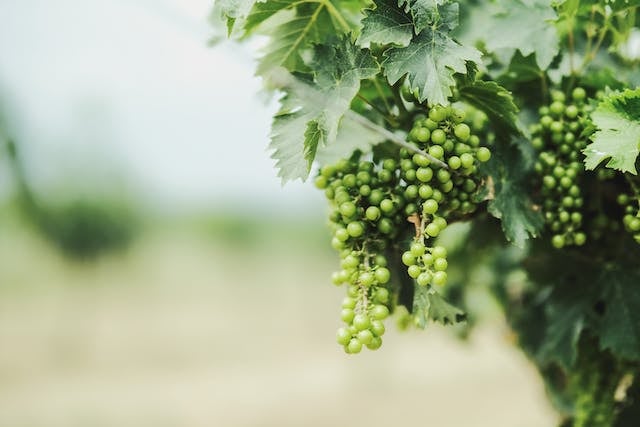5 Kurdish Eating Habits and Food Rules to Eat Like a Kurd
Embarking on a journey through the rich tapestry of Kurdish eating habits is a fascinating way to explore this country’s culture! Beyond borders, the Kurds intertwine stories on their tables, where traditions and flavours converge. Unravelling the vibrant thread of their unique eating customs exposes not just ways of preparing meals, but a celebration of heritage.
Today, we have been joined by Cihan, one of our most beloved Kurdish teachers, to explore the tantalising world of Kurdish cuisine.
→Sign Up Now: Free Trial Kurdish Lesson With a Native Teacher!←
From the sizzle in the preparation to the artistry of presentation, join us as we unlock the fascinating world of Kurdish food through Cihan’s 5 essential tips.
1. Try the local cheese and fresh cottage cheese with fresh unsalted butter for breakfast
Livestock breeding, which constitutes one of the main sources of livelihood for Kurds, has a very large share in Kurdish food culture. Especially in villages, animal husbandry is still intensively practised, especially in regions such as Şırnak and Hakkari, where nomadic Kurds called ‘Koçer’ still live and carry out intensive animal husbandry activities. Here, the rich flora in the high-altitude plateaus adds flavour to the dairy products.
Early every morning, goats, sheep and cows are milked and the milk obtained from them is subjected to various processes to produce yoghurt, butter, cheese and cottage cheese.
But how do people enjoy these products? According to Cihan, fresh and unsalted cottage cheese is brought to the table with fresh and unsalted butter. Then, in the morning, the same fire used to boil the milk is used to bake ‘nanê tirî’, which is also called sheet bread. The combination of this sheet bread, cottage cheese and unsalted butter is the basis of a great Kurdish breakfast.

2. Try various versions of çiğköfte, a flavour whose fame reaches the world
Picture a large basin, where, fueled by the rhythm of folk songs, groups gather for a joyous kneading session. This is how çiğköfte, one of the most important traditional foods of Kurdish cuisine is made. Its preparation nuances may vary across regions, but the essence remains the same—raw meatballs crafted, often in a communal fashion, within the spacious confines of homes on wintry nights.
Brimming with finely ground bulgur, pepper, tomato paste, chopped onion, isot (local hot dried paprika), and an array of spice blends, çiğköfte not only tantalises the taste buds but also fosters a convivial atmosphere.
While the original recipe is meat-based, evolving tastes and health considerations have popularised the meatless rendition, with Şanlıurfa introducing a unique variation—çiğköfte with egg. Imagine eggs sizzling in hot oil, poured into the meatless çiğköfte, kneaded, and served, yielding a distinctive flavour. According to Cihan, this variation is just as delicious as the most traditional version with meat.
3. Taste the traditional Tırşık dish
In Kurdish, “tırş” translates to a sour taste, a fitting description for a dish that has become a staple from everyday meals to grand wedding feasts. Originating from the Diyarbakır region but embraced across many Kurdish provinces, Tırşık is a versatile dish that can be enjoyed with or without meat. Its prime season is undoubtedly summer when the fertile lands kissed by the Tigris and Euphrates rivers yield the freshest vegetables. Villagers often gather these veggies straight from their bostans (gardens) to cook over wood fires in courtyards.
Aubergines, peppers, and tomatoes take centre stage in Tırşık, though in some regions, onions and meat join the flavourful medley. Traditionally cooked in copper pots over wood fires, the process involves cubing aubergines and peppers, roasting them in oil, and adding chopped tomatoes and a dash of chilli flakes or spices.
For the meat-infused version, diced meat takes a turn on the roasting stage. Tırşık always shares the spotlight with pilaf, a tradition that has evolved from being exclusively paired with bulgur pilaf to embracing rice pilaf as well. Despite its name, Tırşık doesn’t incorporate sour elements, a curiosity that may stem from its historical preparation. As it happens with every other aspect of a culture, Kurdish food changes and evolves throughout time to adapt to new needs, preferences and trends.
4. Familiarise yourself with Kurdish viticulture
Viticulture holds its place among the vital occupations of the Kurds, although it’s not as widespread as agriculture and animal husbandry. Regions like Adıyaman, Antep, Bingöl, Elazığ, and Siirt actively engage in viticulture. Here, a variety of grapes—white, black, and to a lesser extent, red—are cultivated. While these grapes could be destined for winemaking, the locals have a penchant for enjoying them as fruit or crafting various products.
Come October, the vintage season unfolds, marking the harvest of syrupy and sweet grapes from centuries-old vineyards. This harvest isn’t just about grapes; it’s a communal effort, especially during the vintage and the creation of pestil. The air is filled with joyous folk songs and klams as villagers join forces. To transform the grapes into syrup, various traditional methods are employed. The result? Molasses, pestil, or even walnut sausage.
During the process of making pestil, the grape juice finds its way into copper cauldrons, where it undergoes a transformation. Flour is introduced gradually to the boiling juice, creating a pudding-like consistency. This mixture is then thinly applied to rectangular pieces of cloth using wooden trowels and left to bask in the sun for drying. After a day or two, the dried layers are carefully collected, removed from the sheets, and folded.
The end product is a delightful snack, often enjoyed in winter with walnuts or paired with buttermilk. In Bingöl, there’s an additional twist to pestil—cooking it. Pestil, cut into chip-sized portions, takes a dip in hot oil, and a sweet concoction emerges as eggs, cooked over high heat, are whisked in and mixed. This culinary journey from vineyard to delicious winter treat encapsulates the vibrant traditions of Kurdish viticulture.

5. Attend A Kurdish wedding to try the best Kurdish food and beverages
The core of Kurdish eating and drinking customs shines at weddings and funerals, where shared meals take centre stage. Typically, after a wedding, everyone is treated to a meal, often featuring wedding roast cooked in large copper cauldrons with meat from cattle slaughtered that morning—a collaborative effort led by women.
Other traditional delights include qozê, a flavourful wedding roast, dolma stuffed with aromatic rice and meat, and skewers of expertly seasoned kebabs. As for drinks, guests can refresh themselves with traditional sherbet and ayran, a salty yoghurt-based drink.
At weddings, communal dining often happens in the wedding owner’s home, either in the courtyard or a spacious area. While catering companies may handle meals today, the importance of communal eating at home endures, preserving culture and fostering solidarity.
As Cihan says, “If Kurdish hospitality is renowned today, it’s because of our robust culinary heritage and our genuine openness to sharing it with others.”
Learn Kurdish with Language Trainers
We hope this journey through Kurdish food traditions has been enjoyable and enriching.
Now imagine savouring the flavours of Kurdish cuisine while seamlessly navigating the conversations that unfold around these communal feasts. At Language Trainers, we invite you to embark on an amazing linguistic journey—one that goes beyond the taste buds and into the heart of the Kurdish language.
→Sign Up Now: Free Trial Kurdish Lesson With a Native Teacher!←
Our Kurdish classes taught by native teachers are crafted to provide more than just language proficiency; they offer a key to unlocking the cultural subtleties woven into every word and phrase. By learning Kurdish with Language Trainers, you not only gain practical language skills but also a deeper understanding of the traditions, stories, and warmth that make Kurdish culture so captivating.
Contact us today to get a free trial Kurdish lesson, and let language become the bridge that connects you to the richness of Kurdish culture.
